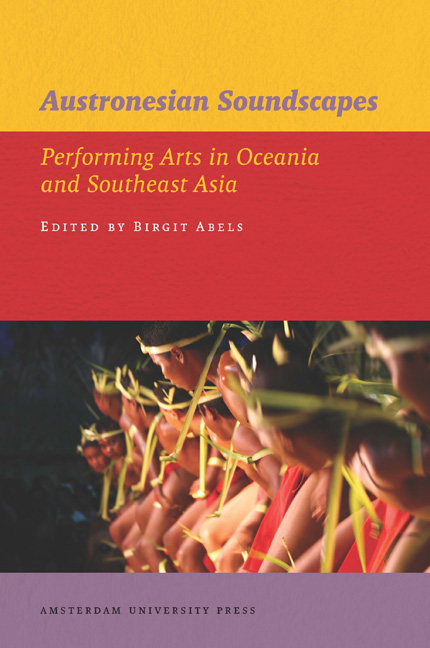11 - Tau’a’alo: Paddling Songs as Cultural Metaphor
Published online by Cambridge University Press: 20 January 2021
Summary
In the maritime kingdom of Tonga in the South Pacific, an important musical genre was tau’a’alo, paddling songs, sung by paddlers to maintain their rhythm while paddling their canoes. Although Tongans now use speedboats or airplanes, the concept embedded in paddling is a metaphor for working together to achieve specific ends. In this chapter, I will examine tau’a’alo in their historic usages and how the tau’a’alo concept has been transformed in the evolution of Tongan music and dance. In keeping with the theme of this volume, I will offer a cultural analysis of their music.
Tau’a’alo were traditionally sung during certain kinds of work that required coordinated movements, such as paddling, dragging a boat to shore, or dragging a pig for presentation on the mala’e, ‘village green’. The term consists of ‘tau’ – a word that has many meanings, but here refers to refrain, chorus, or the part of a poem that expresses the essence of a text, or expresses the essence of the word that follows it, in this case ‘a’alo, ‘paddling’. Thus, tau’a’alo expresses the essence of paddling together, essentially a metaphor for coordinated effort. When performed in conjunction with real coordinated effort, tau’a’alo were, and are, usually quite short and sung over and over until the task is completed. Besides synchronising effort, tau’a’alo are said to ‘lighten the heart and strengthen the muscles’. Today, tau’a’alo are elaborate ritual performances used in conjunction with the confirmation of traditional ceremonies, or the legitimisation of contemporary ceremonies by recourse to tradition. Moreover, the concept can be extended to the importance of working together to gain specific ends and is orally and visually projected in music and dance.
Historic references to Tau’a’alo
An Englishman, William Mariner, who lived in Tonga from 1806 to 1810, used the term tow alo, and noted that they ‘are mostly short songs, sung in canoes when paddling, the strokes of the paddle being coincident with the cadence of the tune’ (Mariner 1818, vol. 2: 320).
Charles Wilkes, who visited Tonga in 1840 on the United States Exploring Expedition, heard and saw a tau’a’alo performed. His description is as follows,
The canoe of these chiefs was seen advancing slowly over the calm sea by the efforts of its scullers, and was filled with men, all singing the following air, keeping perfect time and making excellent music; the notes were obtained by Mr. Drayton.
- Type
- Chapter
- Information
- Austronesian SoundscapesPerforming Arts in Oceania and Southeast Asia, pp. 223 - 240Publisher: Amsterdam University PressPrint publication year: 2012
- 1
- Cited by

